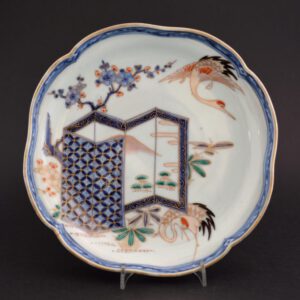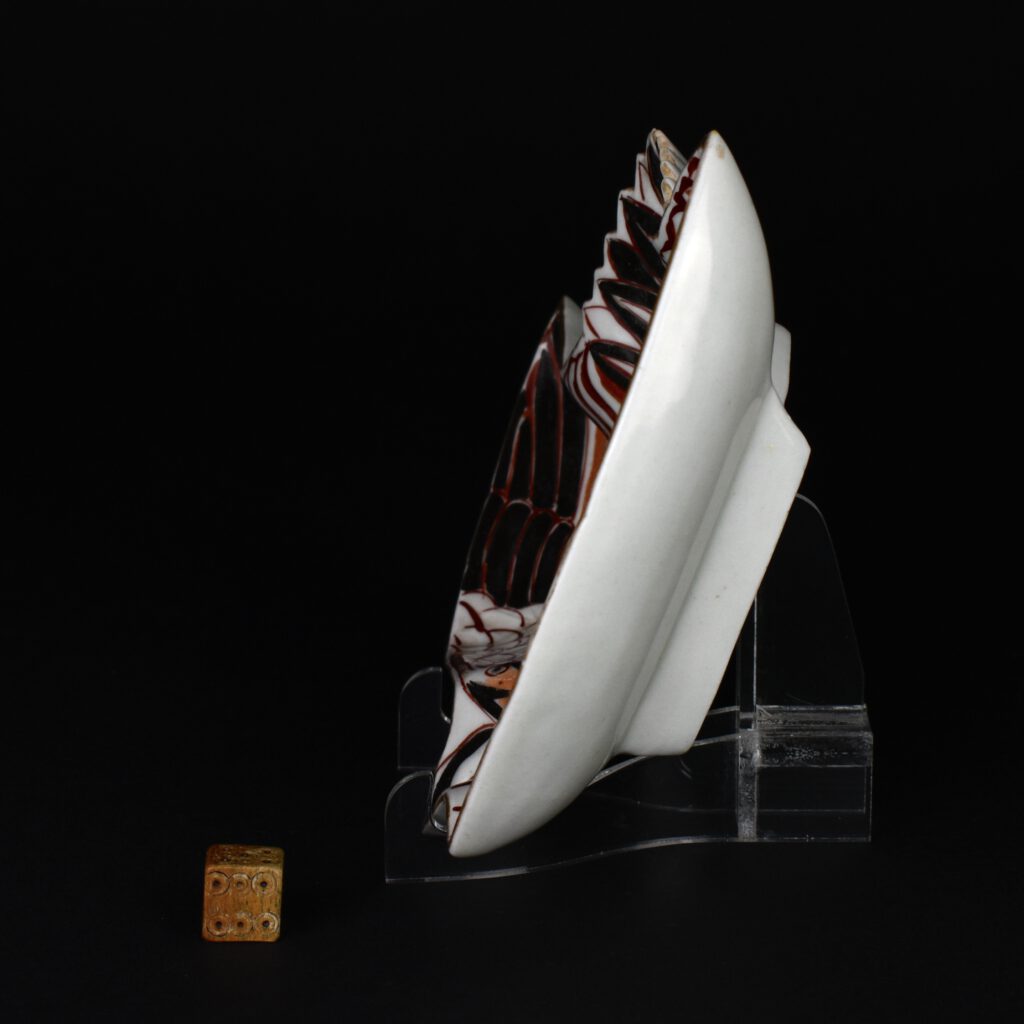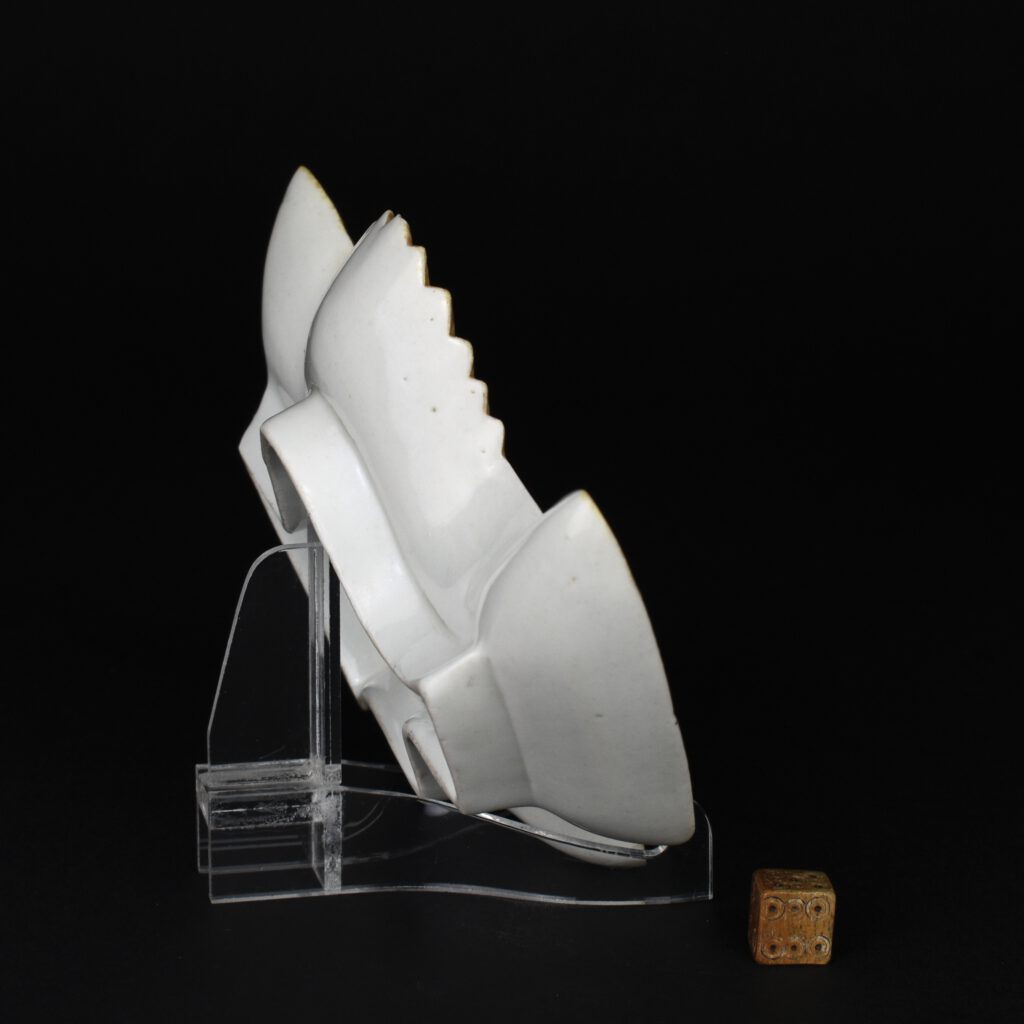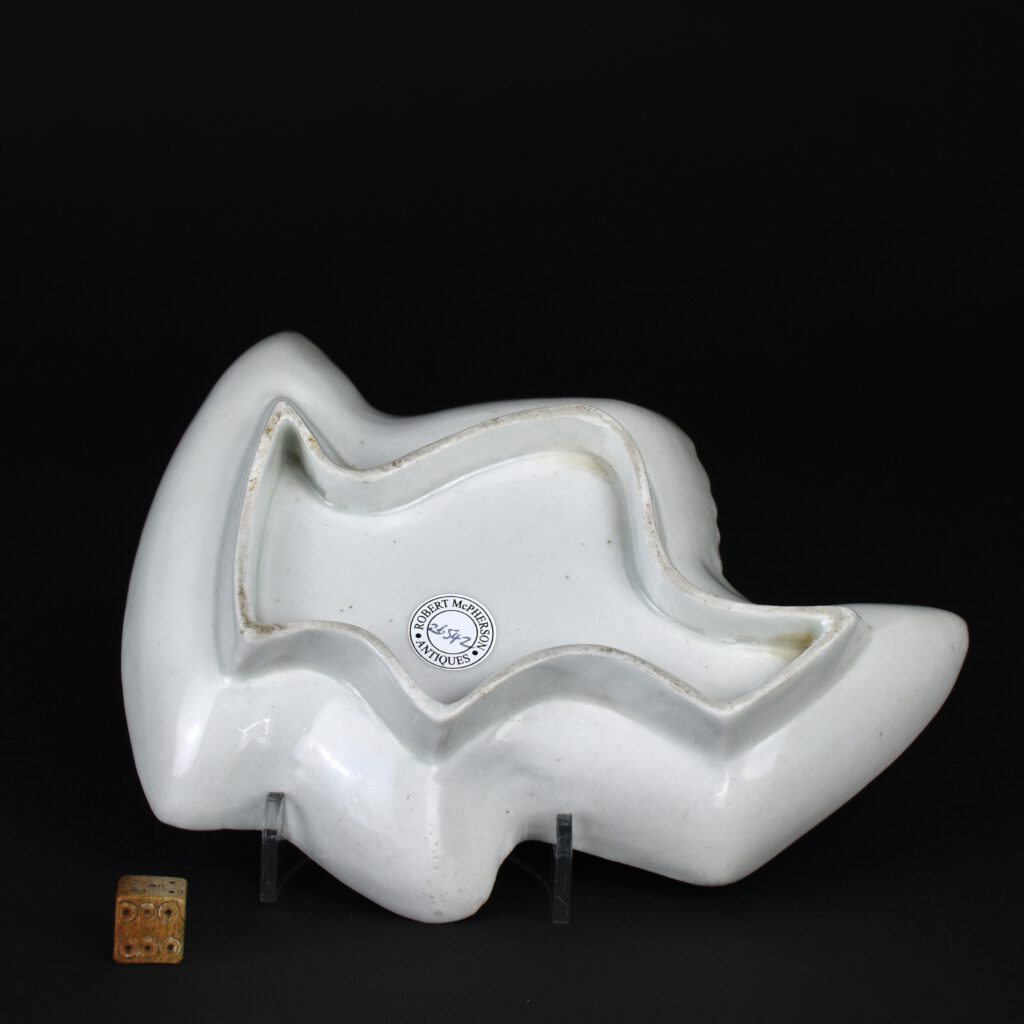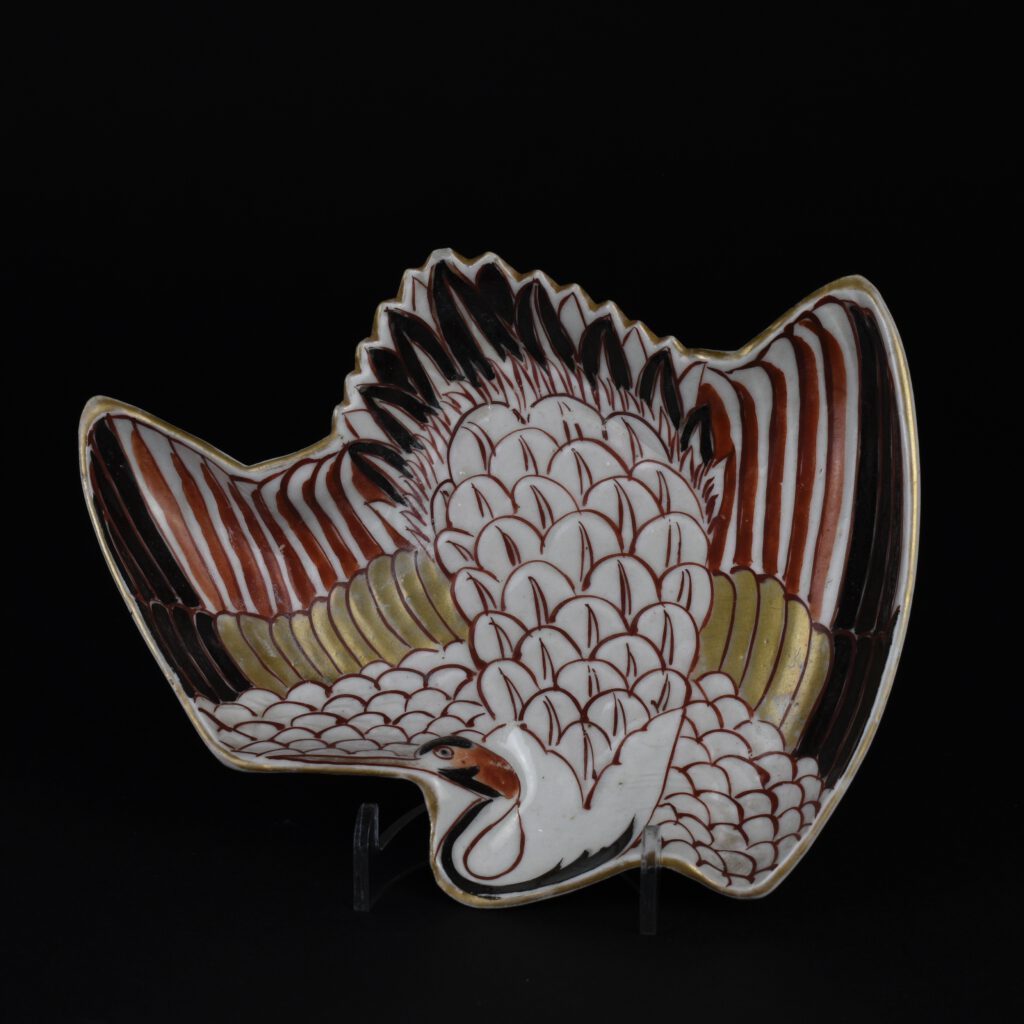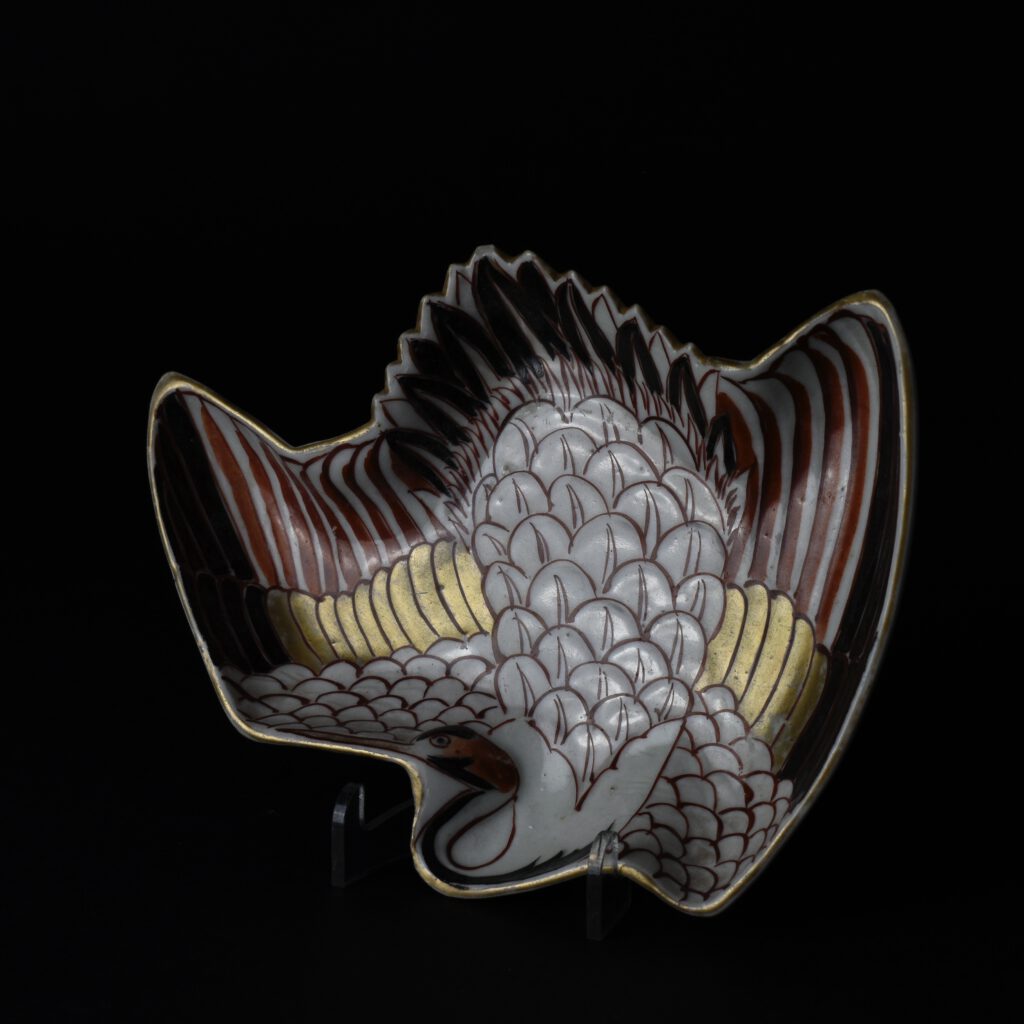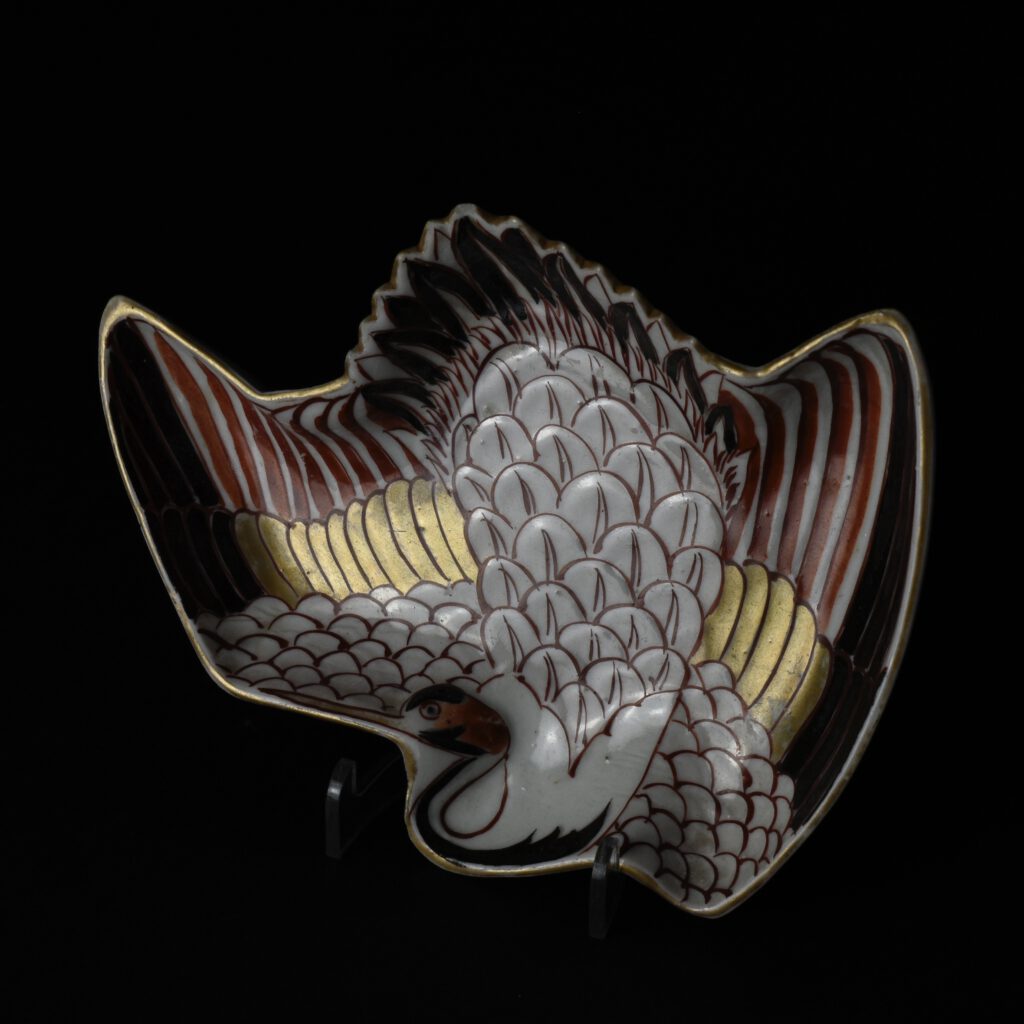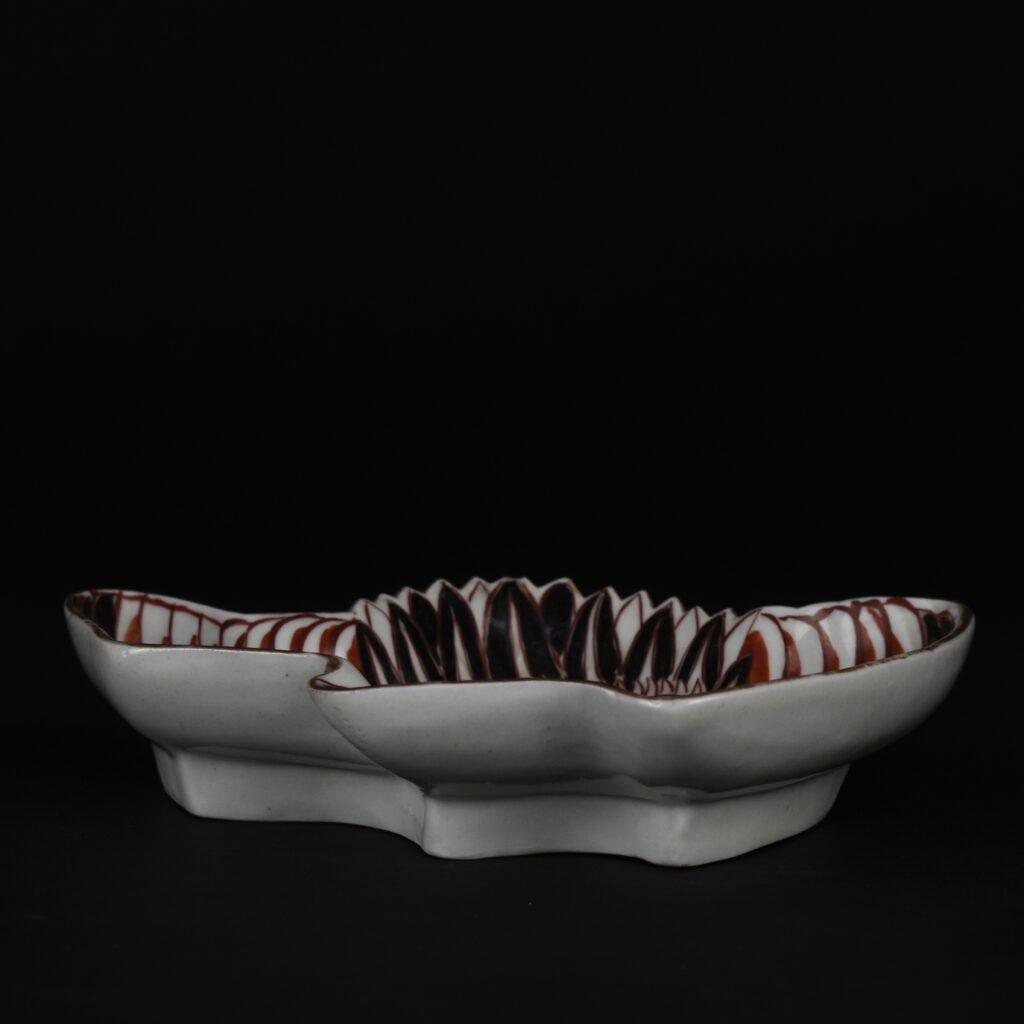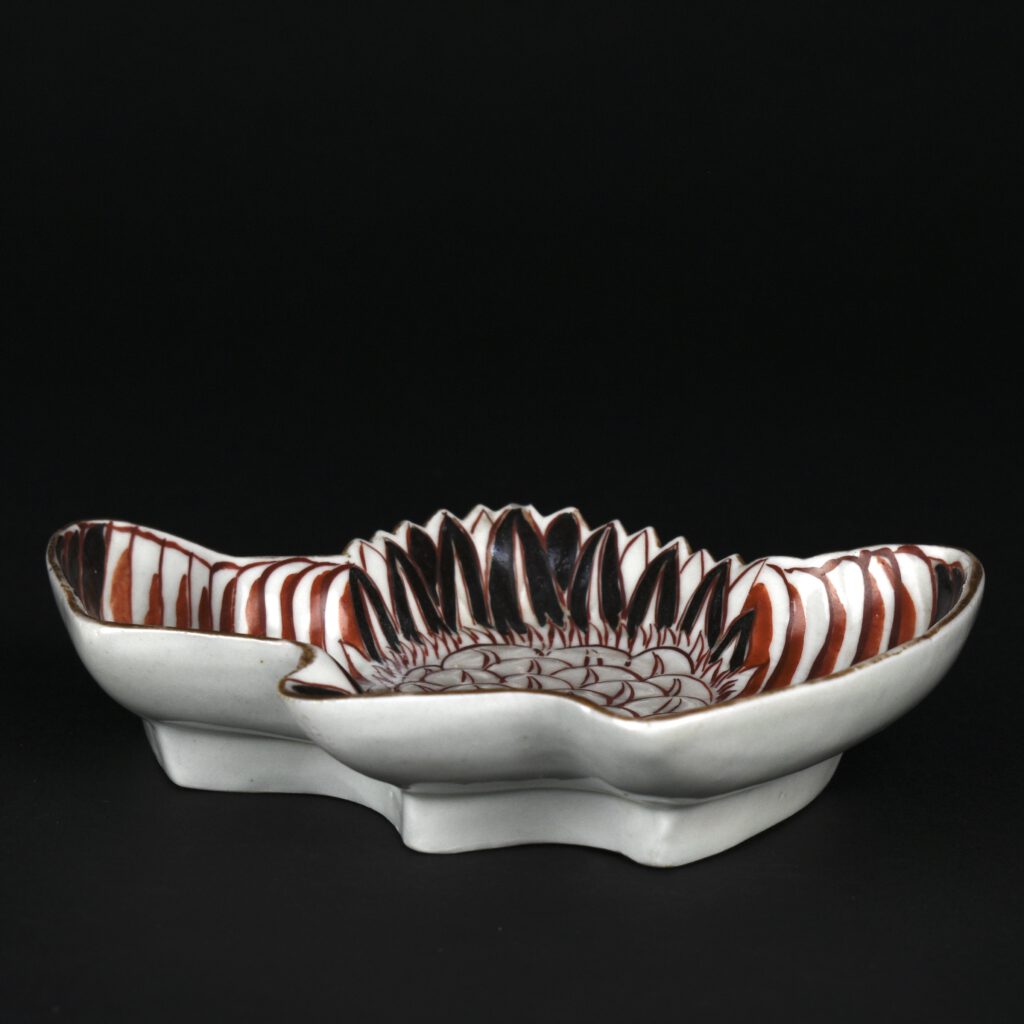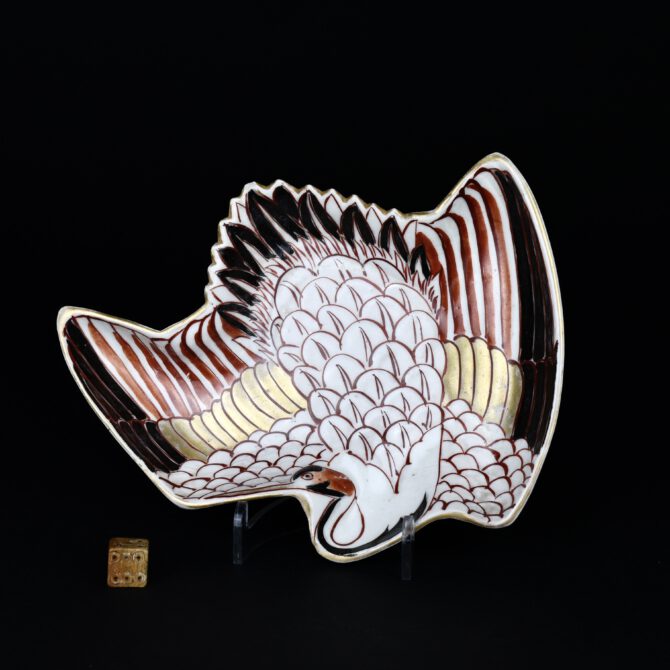
An 18th Century Japanese Porcelain Crane Shaped Dish
An 18th Century Japanese Porcelain Crane Shaped Dish, Arita Kilns c.1700 – 1740. This dish would have been used for serving food, probably for the Japanese Tea Ceremony. It would have been made as part of a set of five, ten or even more. However, dishes of this type with its strong colours and novel would also have appealed to Western taste. The colours are akin to Imari but lack the underglaze cobalt blue found on Imari wares.
SOLD
- Condition
- There is a tiny chip to the central feather of the tail. Minor rubbing in places.
- Size
- 16.4 cm (6 1/2 inches)
- Provenance
- N/A
- Stock number
- 26542
Information
Japanese Imari Porcelain
Imari Porcelain is the European collectors` name for a type of Japanese Porcelain made in the town of Arita, in the former Hizen Province, north western Kyūshū, and exported via the port of Imari, specifically for the European Export trade. Imari was simply the trans-shipment port for Arita wares, no porcelain was made there. The kilns at Arita formed the heart of the Japanese Porcelain industry, which developed in the early 17th century. Although Imari originating in Japan the tern is used to describe a whole range of ceramics from all over the world, they are all linked by their bright distinctive palette of blue, red and gold. The cobalt that created the blue was added prior to glazing, while the iron-oxide red and the gilding were applied after glazing.
Red-Crowned Crane
The Red-crowned Crane, Grus Japonensis, also called the Japanese Crane or Manchurian Crane, is a large crane and is now the second rarest crane in the world. The estimated population of the species is only 1,500 in the wild. Red-crowned Cranes breed in large wetlands in temperate East Asia and winter along rivers and in coastal and freshwater marshes in Japan, China, and the Korean Peninsula. In Japan, this crane is known as the Tancho. In Japan, this crane is known as the tanchōzuru and is said to live for 1,000 years. Cranes are said to grant favours in return for acts of sacrifice, as in Tsuru no Ongaeshi (crane's return of a favour).
A Related 18th Century Japanese Porcelain Dish
